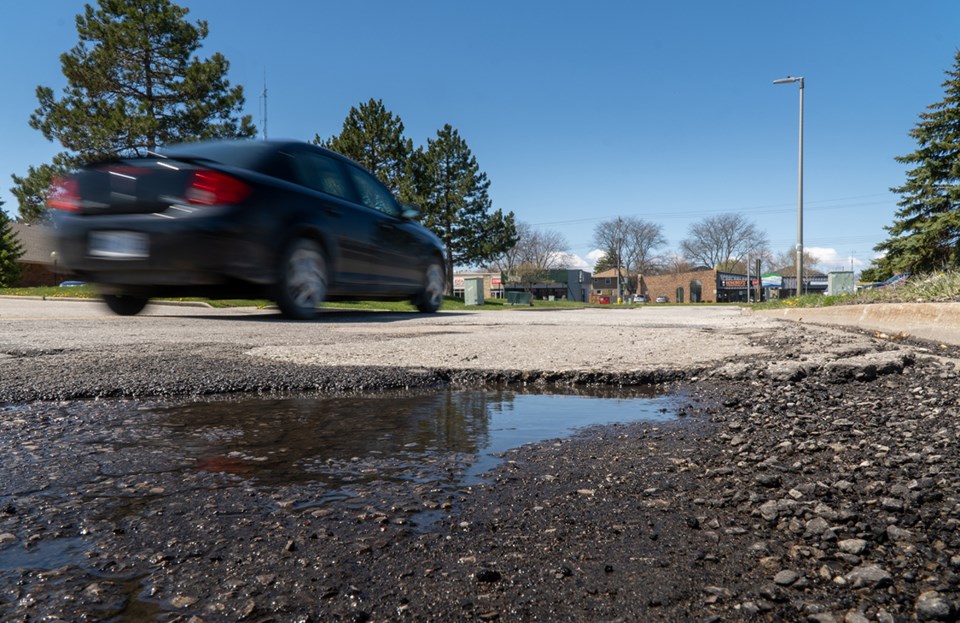Troy Shantz
Sarnia spends about half what other municipalities invest in road repairs, a staff report says.
The average Canadian municipality spends 1.1 per cent of its road replacement value, said the report by city engineer David Jackson.
Yet, in 2020, Sarnia has only a .53 per cent reinvestment rate. And that’s a record high, said Jackson.
A total of $3.7 million is being spent to upgrade city roads this year, the most allocated in any budget in recent memory.
But it is still far short of the 2.5 per cent that industry targets suggest. In Sarnia’s case, there should be a $17.5-million reinvestment every year to meet those targets, Jackson wrote in a recent report to council.
Even if the city tried to keep up with the average municipality’s spending of 1.1 per cent, it would need to make annual repairs of $7.7 million.
“The message is we are underspending for what the needs are,” said Jackson. “Our goal should be to spend what the average Canadian municipality spends.
“I think the main message is that there certainly is a need. We should be working towards spending money on our assets. And then it’s just, how do we come up with the funds to do that?”
The sorry state of many of Sarnia’s roads is no secret to local drivers.
The difference between the actual need and what’s spent on roads — known as the infrastructure deficit — has ballooned under successive city councils to $27 million.
This spring a city woman’s ball joint and lower control arm was gutted from her Lincoln SUV after hitting a patch of broken pavement on Evergreen Drive.
Last year Chris Dietrich, owner of Goodyear Sarnia, said more than half the vehicle repairs done at his London Road shop are suspension, alignment and steering work.
“Without question,” Dietrich said. “The roads are terrible; the potholes are something fierce.”
Jackson said much of the recent money invested in roads was directed to rural highways due to the higher speed limits and attention to motorist safety. The focus now will be on residential thoroughfares, he said, including Plank Road.
Every two years the city assesses all its streets, giving them a grade of 1 to 100 based on potholes, cracks and drivability, he explained. Feedback from the public is also used when selecting roads for repair.
Roads should last 30 to 50 years before major rehabilitation is required. Underground infrastructure, sewers and watermains should last 70-100 years, the report said.
Roads are generally in poorer condition in the area west of Murphy Road, but roads in poor condition are found across the city.
Major infrastructure updates happened in Sarnia between the 1940s and 1960s, Jackson said, and many of them are showing their age.
